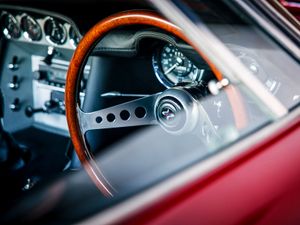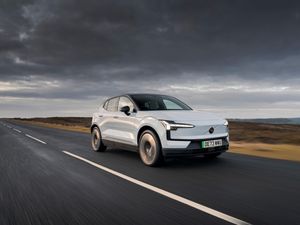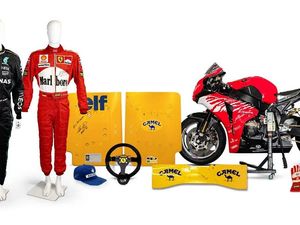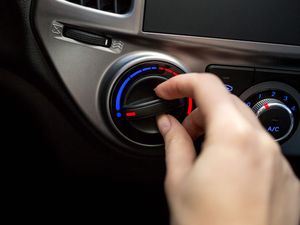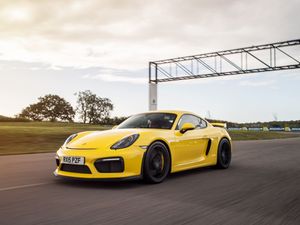New Mini marks milestone
To a good many people the launch of the new Mini on November 18, 2006, will probably be insignificant and just another day in a busy life. But to hundreds, if not thousands of people, that day will be memorable.
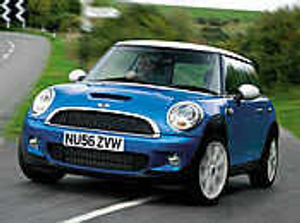
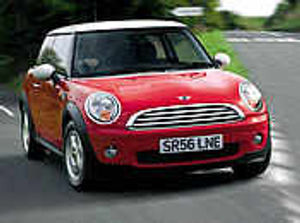
It would have been the 100th Birthday of one of the most brilliant motor engineers and designers this country, if not the world, has ever seen.
I refer of course to Sir Alec Issigonis. This man's genius started the story of the Mini in the 1950s. It was a total revolution in car design, which has been carried forward to this day.
And 2001 saw the final chapter in the long heritage and history when the all-new Mini was shown to the public. At that time it was an unbeatable combination of grin-inducing driving dynamics, superb design, solid engineering with high quality materials which made the Mini an icon in the first decade of the 21st Century.
But as we all know, in the motor industry you cannot afford to stand still and whilst I think the iconic 2001 Mini still looks like a breath of fresh air and still is a desirable vehicle, a fact proven by the hundreds of thousands which have been sold, a factor which we shouldn't overlook is the billions of income for UK by the export market.
The new 2007 model year Mini is somewhat different, but if you look at it side by side with its predecessor you will still see it is classically Mini. What the designers have done is to accept the philosophy of - "if it is not broken then don't mend it". They have instead fine-tuned and re-designed parts of the car.
They have managed to retain the iconic design cues, and to allow ownership benefits and the personalisation opportunities which people obviously love, but it is all change for the new Mini accept of course for a few key details such as the badge on the bonnet, and the brilliant handling.
The new Mini Mark 2 presents a familiar style. In fact, if you glance at one driving past without being in the know as to what changes have been made, you probably won't even recognise it as being all new.
But what is new? Every exterior panel, every interior panel and surface, suspension with specific spring and damper settings, larger brakes, a six-speed manual transmission for the Mini Cooper. Engines are more powerful with improved emissions and fuel economy which will please the company car driver.
On Cooper S models a Sport button is now included, this makes the gears on the automatic, the throttle response on the manual and the suspension on both models more driver responsive. On the automatic Cooper S paddle shift devices on the steering wheel are available.
A new system of ignition has been incorporated whereby the Mini key with a memory function is inserted in to the dashboard and then we revert back quite a few years to pressing a button to start the engine.

Pity they didn't change this aspect. Also retained is the huge dinner-plate-sized speedometer in the centre of the dashboard.
The Mini badge and the kart-like handling with the wheel at each corner have been retained. Also retained is the penny pinching TLC service - I really cannot understand anybody in their right mind not taking this option when they order their car. A mere £150 gives you peace of mind for five years and it is transferable to a second owner.
The new Mini Cooper features a brand new 1.6-litre four-cylinder petrol engine, designed by BMW and assembled locally at the Hams Hall engine plant in the Midlands. The power has been increased by 5bhp to 120bhp, not only does it pack more punch but with the introduction of state-of-the-art technology, fuel consumptions and emissions are reduced. The top speed is now claimed to be 126 mph, with
0-60 achieved in just over nine seconds. It should return nearly 50mpg, this is an impressive 19 per cent increase on the previous model.
If performance is your forte then the Mini Cooper S is probably going to be your option, this introduces turbo power to the range. The directly-injected engine produces 175bhp, which is an increase on the model it replaces.
A system of infinitively variable valve timing manages engine output and torque and minimises fuel consumptions and emissions. The turbocharger system splits exhaust gases and forces them through two cylinders each by virtue of a twin-scroll turbocharged system. This obviously helps to reduce lag and it gives sharper more spirited acceleration. The top speed is quoted as 140mph, and the
0-60 is now just marginally under seven seconds, fuel consumption at 40mpg is an impressive 25 per cent improvement on the previous supercharged version. And again, with the emissions being reduced the tax band has been lowered, making it more viable from an expenses point of view.
The Mini PR team knew what they were doing when they chose the brilliantly hilly terrain in and around Barcelona for the launch of the new Mini. Both the Cooper and the Cooper S showed that they had lost none of the brilliant handling characteristics that were so evident when the vehicle was first launched in 2001.
I remember that launch and at that time I was blown away by the looks and the style and the whole driving dynamics of the vehicle, and it is pleasing to note that the current vehicles are just as good. In fact, I think the Cooper S is even better.
I know we make progress and we always expect something that is replacing a well-know trusty companion to be possibly that little bit better, but I think with the new Cooper S the designers have managed to soften the suspension without it spoiling the handling.
I criticised the original Cooper S as rattling the fillings in my teeth but the new one handled superbly, it turned in on the proverbial six pence, held a line as you would expect it to do with no discernable under or over steer, and was a competent, able performer which transmitted confidence back to the driver in all sorts of situations. More importantly, it didn't bounce like a pogo stick and it didn't jar your spine. They just seem to have modified it to the extent where it makes it almost perfect.
Without doubt the new 2007 Mark 2 Minis will be a continued success for the range. Cabrio versions will continue using the current chassis and engines and Mini are projecting that it will be at least two more years before the estate version enters in to the arena.
Ownership of a Mini starts at £12,995 for the Cooper and the Cooper S starts at £15,995. You may enter your dealership with your £12,995 or your £15,995, but I guarantee that you will not walk out with it costing that amount. The key options are quite extensive.
It was disappointing to note that even the air conditioning is not a standard feature on any of the models and if you want this fitted to your vehicle, and lets face it most people nowadays will do, then be prepared to pay £660. Metallic paint introduces £285 extra, cloth and leather £380. If you fancy the stripes on the bonnet, which really do give it a smart, sporty look, then pay a further £60.
The list of extras is quite considerable, a six-disc CD changer is £290 and should you be unable to manage without a built-in satellite navigation system then be prepared to pay £1,500.
You are probably better looking at the Pepper and Chilli options; they represent a 25 per cent saving over buying individual options. For example the Chilli Pack, which costs £1,875 on the Mini Cooper S, introduces cloth and leather upholstery, a three-spoke sports leather steering wheel, passenger seat height adjustments, front foglights, manual air conditioning, an on-board computer and additional equipment with the sports suspension, 17in crown spoke light-alloy wheels and the bi-Zeon headlights, so it is worth looking at the pack options.
One of the biggest features when you buy your Mini is that they are the best vehicle in the UK for residual value retention. So you know if you buy a Mini today that 12 months or two years down the road it is going to be the slowest depreciating vehicle on sale in the UK and that has to be a huge bonus.
By Bob Hickman

